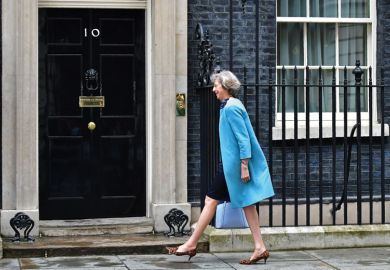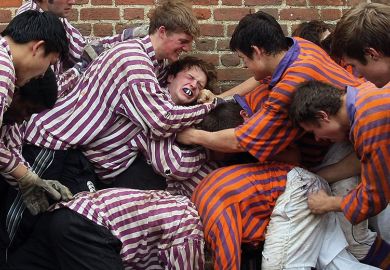Students are far more likely to attend a highly selective university in the UK if they were educated in an area with grammar schools, a study suggests.
Those living in areas where children take the 11-plus streaming exam are roughly two-thirds more likely to attend a Russell Group university or other highly selective higher education institution – with some 39 per cent of those living in areas with grammars and secondary moderns progressing to a highly selective university, compared with 23 per cent of those who live in non-selective areas, according to the paper by the Higher Education Policy Institute, published on 10 January.
The study, The Impact of Selective Secondary Education on Progression to Higher Education, also suggests that state school pupils from the poorest fifth of families are twice as likely to go to the universities of Oxford and Cambridge if they live in a selective area.
Black and ethnic minority students are five times more likely to go to Oxbridge if they live in a selective area – with the UK’s 163 grammar schools sending 30 per cent more BME students to Oxbridge (486) than nearly 2,000 non-selective schools combined (362).
The study’s author, Iain Mansfield, a former senior civil servant at the Department for Education, describes that last statistic as a “shocking indictment of the comprehensive system”.
Overall, grammar schools are most likely to send pupils to highly selective universities, with 53 per cent of pupils going to top-third institutions in terms of selectivity, ahead of 48 per cent for independent schools, 23 per cent for comprehensives and 13 per cent for secondary moderns, explains the study, which uses DfE data collected in 2016 for about 403,000 pupils.
When grammars and secondary moderns are considered together as a system, however, their schools outperform comprehensive schools on university access – with 65 per cent of pupils reaching higher education, compared with 59 per cent of pupils from comprehensives.
The study’s conclusions are likely to reopen the debate over the currently prohibited creation of new grammar schools and also run contrary to the majority of education research in this area, which has tended to dismiss the much-discussed social mobility benefits of grammar schools.
In 2014, a DfE-commissioned report by Claire Crawford, an economist from the Institute for Fiscal Studies and the University of Warwick, found that pupils with similar attainment levels at 11 were only marginally more likely to reach a top university if they went to a grammar school than a comprehensive once statistics were adjusted for socio-economic status and geography.
However, the latest study suggests that an “unconscious bias” among largely Labour-voting “educational experts” may explain why academic research has been so overwhelmingly against grammar schools. Studies often focused solely on the poorest pupils in receipt of free school meals rather than looking at wider disadvantage, it adds.
“Opponents of grammar schools portray them as just for the rich, but 45 per cent of their pupils come from below-median income households, so that simply isn’t true,” said Mr Mansfield, who describes himself on Twitter as a Conservative activist, adding that “the presence of grammar schools benefits pupils in every quintile of disadvantage”.
Nick Hillman, the director of Hepi, said he hoped that the report would help to open up the debate on grammar schools, which had “become ludicrously one-sided”.
“Researchers line up to condemn them for inhibiting social mobility, and the schools do not perform well on every single measure,” said Mr Hillman. “But the full evidence is more nuanced and shows that some pupils benefit a great deal.”
Register to continue
Why register?
- Registration is free and only takes a moment
- Once registered, you can read 3 articles a month
- Sign up for our newsletter
Subscribe
Or subscribe for unlimited access to:
- Unlimited access to news, views, insights & reviews
- Digital editions
- Digital access to THE’s university and college rankings analysis
Already registered or a current subscriber?








